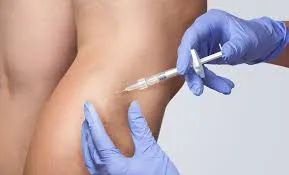Spider veins are small, visible blood vessels that appear close to the skin’s surface, typically on the legs and face. These thread veins can cause cosmetic concerns and sometimes mild discomfort. Spider vein treatment procedures offer effective solutions for removing these surface veins and restoring smoother-looking skin. Understanding what to expect from these treatments helps patients make informed decisions about their vascular care.
Treatment Options
Sclerotherapy is a treatment method for spider veins. This procedure involves injecting a specialized solution directly into the affected veins through a very fine needle. The sclerosing agent causes the vein walls to collapse and stick together, effectively closing off the blood vessel. The body then gradually absorbs the treated vein tissue over several weeks to months.
Laser therapy provides an alternative approach for treating spider veins, particularly those on the face or tiny thread veins on the legs. The laser delivers focused light energy that heats and damages the vein walls, causing them to collapse. This method is effective for treating surface veins that are too small for sclerotherapy injections. The laser treatment targets the hemoglobin in the blood vessels while protecting the surrounding skin tissue. The choice between sclerotherapy and laser therapy depends on factors such as vein size, location, and patient-specific preferences. Some patients may benefit from a combination approach using both treatment methods to achieve optimal results.
What to Expect
The treatment session begins with a thorough examination of the affected areas. The practitioner cleanses the skin and may mark the target veins for precise treatment. For sclerotherapy, the injection process involves multiple small injections along the course of each vein. Patients experience minimal discomfort, often described as a mild burning or cramping sensation that subsides quickly.
Laser therapy sessions involve positioning the laser device over the targeted veins. The practitioner adjusts the laser settings based on the specific characteristics of the veins being treated. Patients may feel a slight stinging sensation during laser pulses, but most find the discomfort manageable. The procedure duration varies depending on the number and size of veins being treated. Treatment sessions are performed on an outpatient basis, allowing patients to return home the same day. The practitioner may apply compression stockings or bandages to the treated areas to support the healing process.
Immediate Aftercare
Spider vein treatment involves minimal downtime and mild side effects. Patients can expect some temporary redness, swelling, or bruising at the treatment sites, but these effects usually subside within a few days to weeks. The treated veins will gradually fade as the body reabsorbs them, a process that can take several weeks to several months for complete resolution.
Walking is encouraged immediately after treatment to promote healthy blood circulation. Patients should avoid strenuous exercise, hot baths, and prolonged sun exposure for several days following the procedure. Compression garments may be recommended to support the healing process and optimize treatment results.
Some patients may notice temporary darkening or staining of the skin along the treated vein paths. This hyperpigmentation typically resolves within several months as the body’s healing process continues. Follow-up appointments enable the practitioner to monitor progress and determine if more treatment sessions are needed to achieve the desired results.
Book Your Spider Veins Treatment Today
Spider vein treatment procedures offer solutions for addressing spider veins with minimal downtime and discomfort. The combination of sclerotherapy and laser therapy provides comprehensive options for treating various types of thread veins and surface veins. Schedule a consultation with a qualified vascular specialist to discuss your specific concerns and determine the most appropriate treatment plan.

